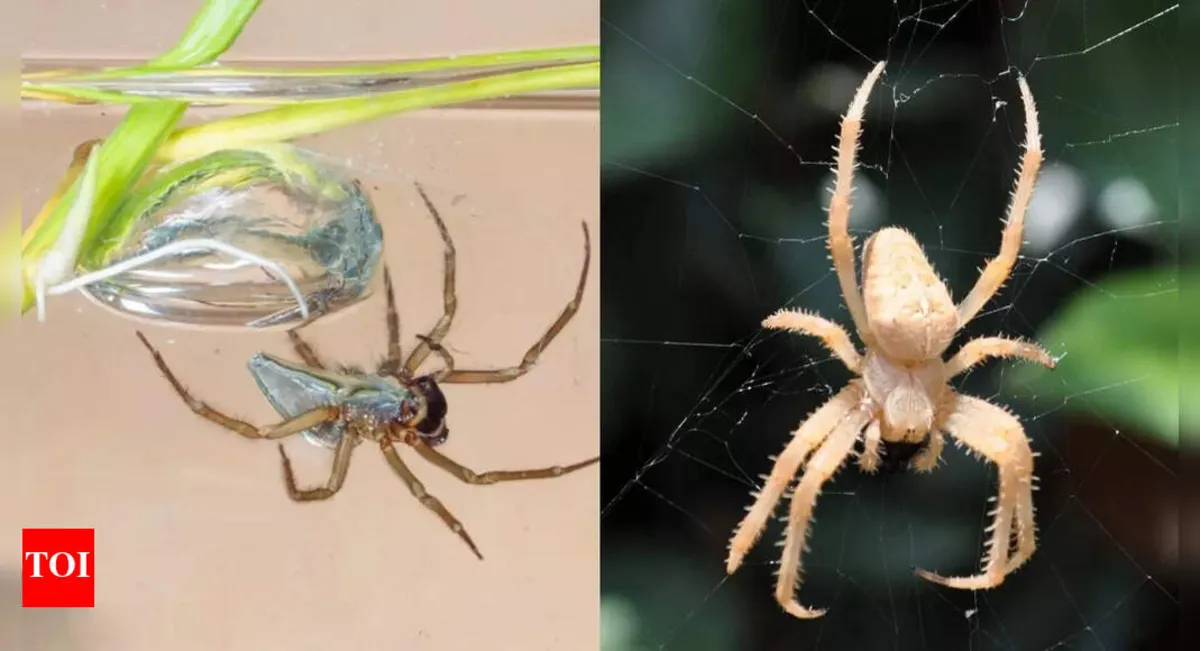
A groundbreaking study has revealed that spiders may have evolved from ancient marine ancestors, reshaping our understanding of arachnid evolution. Researchers conducted a detailed analysis of a 500-million-year-old fossil known as Mollisonia Symmetrica, which exhibits neural structures strikingly similar to those of modern spiders, rather than those of horseshoe crabs. This discovery challenges the long-standing belief that arachnids exclusively evolved on land.
In research published in the journal Current Biology, scientists from the University of Arizona meticulously examined the brain and central nervous system of Mollisonia Symmetrica. This extinct species was once thought to belong to a specific group of arthropods known as chelicerates, which thrived during the Cambrian period, approximately 540 to 485 million years ago. Historically, chelicerates were believed to be ancestors of horseshoe crabs, but new findings suggest a different evolutionary path.
The researchers noted that the neural arrangement within the fossilized brain of Mollisonia did not align with that of horseshoe crabs. Instead, it mirrored the neural structures found in modern spiders and their relatives. According to the study, the anterior portion of Mollisonia’s body, referred to as the prosoma, contains a unique radiating pattern of segmental ganglia responsible for controlling the movements of five pairs of appendages. Additionally, a distinctive unsegmented brain extends short nerves to pincer-like claws that resemble the fangs of spiders.
The most crucial aspect that classifies Mollisonia as an early arachnid is the organization of its brain. The arrangement is a reverse of the anterior structure seen in modern crustaceans, insects, centipedes, and horseshoe crabs. Nick Strausfeld, the lead author of the study and a regents professor at the University of Arizona, explained that this "back-to-front" configuration facilitates shortcuts from neuronal control centers to circuits that govern movement. This adaptation is essential for the stealthy hunting techniques and web-spinning dexterity observed in contemporary spiders.
This study has significant implications for our understanding of arachnid evolution. For years, it was believed that spiders and scorpions have been terrestrial creatures for the past 400 million years, making them one of the most successful groups of arthropodan predators. However, the findings suggest that arachnids may have had a more complex evolutionary history that includes a marine origin.
There is ongoing debate among researchers regarding the precise origins of arachnids and whether their ancestors were marine or semi-aquatic like horseshoe crabs. According to the study, the lineage of Mollisonia eventually gave rise to modern spiders, scorpions, sun spiders, vinegaroons, and whip scorpions, indicating a rich evolutionary tapestry that extends far beyond land-dwelling adaptations.
This research not only challenges conventional theories about arachnid evolution but also opens new avenues for understanding the ancient connections between land and sea creatures. As scientists continue to explore these ancient fossils, our perspective on the origins of spiders and other arachnids will undoubtedly evolve further.
For more updates on exciting discoveries in the field of paleontology and arachnology, be sure to follow us on social media!